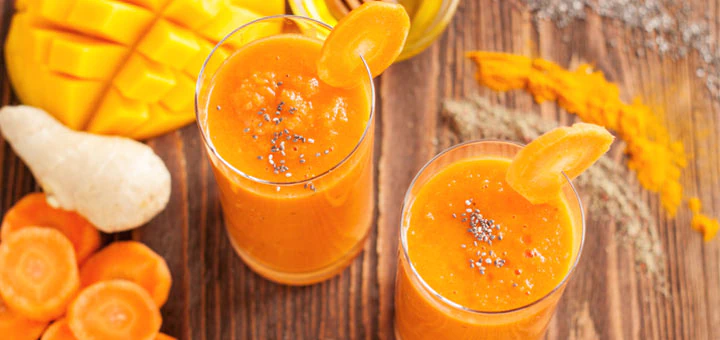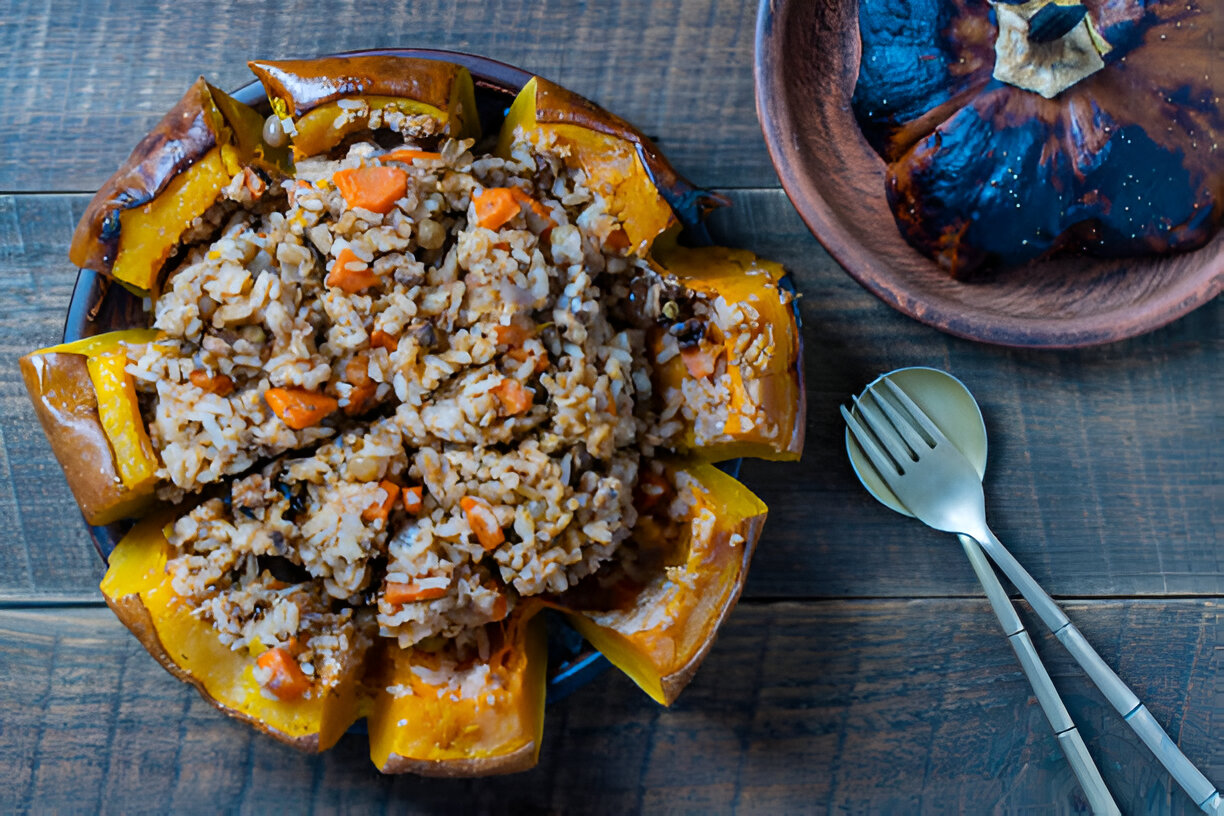
Health is more than skin-deep — as is its most pervasive adversary. Invisible and symptom-free, chronic inflammation is a factor in heart disease, some types of cancer, asthma, Alzheimer’s, even aging itself.
“Cooling the fires of hidden inflammation may be the most important thing you can do for your long-term health and well-being,” says Dr. Mark Hyman, editor in chief of Alternative Therapies in Health and Medicine.
Our four-step plan, covering food choices, weight management, exercise, and stress reduction, can help keep you healthy from your cells on up.
What Is Inflammation?
Whether you scrape your knee, twist your ankle, or succumb to strep throat, the body’s reaction is the same: The immune system sends in an army of white blood cells to destroy bacteria and repair the tissue. This healing process, called the inflammatory response, is one of the body’s most basic survival instincts.
Under normal conditions, inflammation’s hallmark signs — redness, swelling, soreness, and warmth — stay localized and disappear as the injury or infection heals. But sometimes the immune system does not shut off, instead releasing a stream of inflammation-promoting compounds that spread throughout the body, damaging cells and tissues.
“Inflammation is a very effective mechanism for fighting off invaders,” says Dr. Peter Libby, chief of cardiovascular medicine at Brigham and Women’s Hospital in Boston. “But when the body is exposed to invaders for long periods of time, the defense mechanisms can be turned against us.”
If left unchecked, low-level systemic inflammation can simmer for years, contributing to a range of seemingly unrelated ailments. Research shows that it can weaken cholesterol deposits in the coronary arteries, leading to heart disease; trigger bronchial tubes in the lungs to swell, causing asthma; or set the stage for abnormal cells to proliferate and become invasive cancers.
“Inflammation is a key cause or factor in almost all chronic degenerative and lifestyle diseases,” Hyman says.
What ignites the fire in the first place? Repeated or prolonged ailments, such as sinus or bladder infections, gingivitis, or stomach ulcers, can trigger chronic inflammation, as can food allergens, pesticides, even unremoved surgical sutures. In some cases, as with Crohn’s disease (marked by inflammation in the small intestine), the cause is unknown.
Perhaps the most dangerous aspect of chronic inflammation is its stealthy nature; people often don’t know they have it. Unless you have a painful inflammatory disease like lupus or rheumatoid arthritis, you might not have any symptoms at all.
To detect silent inflammation, physicians measure blood levels of C-reactive protein (CRP), a substance found in the blood when systemic inflammation is present. When doctors find elevated CRP levels, they often do additional tests to determine what’s triggering the inflammation and prescribe appropriate treatment.
But “extraordinary science supports the very ordinary ways you can control inflammation,” says Hyman. This diet, exercise, and stress-reduction plan can help.

Eat an Anti-Inflammatory Diet
Revising your diet is one of the easiest, most effective ways to affect inflammation. “Food contains not only calories, but also specific messages that turn on or off messages of inflammation,” explains Hyman.
Refined carbohydrates and high-glycemic foods, those that rapidly raise blood-sugar levels, are best kept to a minimum; diets high in foods like potatoes, muffins, white rice, and white bread prompt the body to produce pro-inflammatory chemicals called prostaglandins. A study led by Dr. Simin Liu of Brigham and Women’s Hospital found that women who ate such diets had significantly increased CRP levels.
Fats can fuel the fire or help extinguish it. Omega-6 fatty acids (found in corn and soybean oils) aggravate inflammation; trans fats, found in partially hydrogenated oils and fried foods, are especially harmful. Omega-3 fatty acids (found in wild salmon, herring, flaxseed, and walnuts), however, are strongly anti-inflammatory.
Not surprisingly, vegetables, fruit, and whole grains seem to quell inflammation. Part of the effect may come from the antioxidant content. Free radicals, unstable oxygen molecules linked to a host of chronic illnesses, cause oxidative stress in the body that can lead to inflammation, says Hyman. Antioxidants like beta-carotene (found in squash, carrots, and spinach), lycopene (found in tomatoes), and vitamin C (found in broccoli and citrus) “sweep up” the free radicals, thereby helping to reduce inflammation.
If you’d rather not get too bogged down in particulars, says Hyman, just remember that “the basic premise of an anti-inflammatory diet is simple — eat whole, unprocessed plant foods with plenty of color and variety.” Far from being mere flavor enhancers, herbs like ginger, garlic, and onion have strong anti-inflammatory properties.
Testing for Silent Inflammation
A blood test can measure acute levels of C-reactive protein (CRP), a protein in the blood that rises in response to inflammation. CRP levels range from 1 to 10 milligrams per liter. A level below 1mg/L is ideal; above 3mg/L indicates high levels of inflammation. A low test result doesn’t always mean inflammation is absent, however; the inflammatory diseases rheumatoid arthritis and lupus, for example, don’t always trigger high CRP levels.
The Centers for Disease Control and Prevention recommends the test only for people in certain risk categories (such as those with a history of heart disease); other health experts believe everyone should be tested. Talk to your doctor to see if the test is right for you.
Diet: Smart Strategies to Adopt Now
Boost your berry intake.
Blueberries, cherries, and blackberries are rich in anti-inflammatory flavonoid compounds. When berries are out of season, buy them frozen and toss them into smoothies.
Fill up on fiber.
Incorporate beans, legumes, and whole grains (such as brown rice or quinoa) into your diet. Also add nuts: Sprinkle almonds, hazelnuts, or walnuts on cereal, toss them into salads, or stash them in your desk drawer for a healthy alternative to vending-machine fare.
Fine tune your fats.
Rid your kitchen of saturated fats and trans fats (avoid margarine and anything with hydrogenated oil in it) and replace them with healthier options, such as extra-virgin olive oil and flaxseed oil.
Eat more plant- and fish-based proteins.
If you eat red meat or chicken, substitute soy or fish a few times a week. Animal proteins contain arachidonic acid, which the body uses to produce pro-inflammatory prostaglandins. Wild salmon, sardines, and herring are rich in omega-3 fats and relatively low in the toxin mercury, according to the Natural Resources Defense Council’s best fish list (nrdc.org). Look for the Seafood Safe label, and if you’re in doubt about the quality of your fish, consider taking a fish-oil supplement.
Spice up your mealtime.
Certain spices have strong anti-inflammatory effects — in particular, ginger, garlic, onion, turmeric, and rosemary. Make them an integral part of your diet. Try using ginger, garlic, and onion in stir-fries, turmeric in soups, and rosemary on roasted veggies.

Maintain an Optimum Weight
Scientists have long known that overweight people have increased inflammation levels, but they now believe that at least some of this inflammation can be traced back to the fat itself. In people who are overweight or obese, fat cells churn out proteins known as cytokines, which can induce low-grade systemic inflammation.
And when it comes to excess body fat, location is critical. “The greatest source of inflammation is the fat around our abdomen,” says Hyman.
Apple-shaped abdomens have also been linked to a condition known as insulin resistance, in which the body is unable to respond to and use the insulin it produces. Insulin resistance affects more than a third of Americans and is linked to hypertension, cardiovascular disease, and type 2 diabetes. A recent study in the Journal of the American Medical Association found that women who had more abdominal fat due to insulin resistance also had more inflammation. When they lost weight around the middle, their levels of inflammation and of insulin resistance dropped.
Weight: Smart Strategies to Adopt Now
Reach your ideal weight.
Even if you’re only slightly above your ideal weight, dropping just 5 to 10 percent of your weight can dramatically affect your inflammation levels, says Libby. Start by calculating your body-mass index (BMI), a measure of weight for height. BMI equals (weight in pounds)/(height in inches)2 x 703. According to the Centers for Disease Control and Prevention, a BMI ranging from 18.5 to 24.9 is considered normal. (If math isn’t your forte, visit nhlbisupport.com/bmi for an easy-to-use chart.)
Measure your midsection.
One predictor of insulin resistance is the waist/hip ratio. First measure your waist (loosely, the way a tailor would), and then measure the widest point of your hips. Divide the former measurement by the latter. A result of more than 0.8 (for women) or 0.9 (for men) can suggest a tendency for insulin resistance. See your doctor for more-definitive tests.

Move More
Regular, consistent physical activity is one of the best ways to keep inflammation at bay. “This may explain why long-term regular exercise dramatically reduces heart disease, a condition we now know to be a disease of inflammation,” says Hyman. Elevated CRP levels are associated with an over fourfold increased risk of heart attack.
Although experts aren’t certain how exercise reduces inflammation, they suspect it’s because an active body revs up production of antioxidants, which “vacuum” the free radicals that can otherwise lead to inflammation. “Free radical damage is like rust on the inside of our bodies, in the cells themselves,” explains Hyman.
How you move isn’t important; what’s crucial is that you do. Overly strenuous or weekend-warrior-type exercise can actually boost inflammation levels, so there’s no need to train for a marathon or climb Mount Everest to get in shape. A study published in the Journal of the American Medical Association showed that after just six months of exercising for an average of 2.5 hours a week, people with a known risk of heart disease had a 35 percent reduction in CRP levels.
Exercise: Smart Strategies to Adopt Now
Make time for it.
Aim for 30 minutes of aerobic exercise, such as walking, jogging, swimming, or vigorous gardening, four days a week. When you’re busy or stressed out, exercise is often the first thing to go. You’re more likely to stick to your plan if you treat it as a can’t-miss meeting. Mark your workout on your calendar or use a free email reminder service, such as rememberit.com.
Choose the right mix.
Be sure your routine is well-rounded, says Hyman. He advocates incorporating interval training (workouts of varying intensities, including high-intensity bursts) into your exercise routine at least three times weekly and doing 20 minutes of strength or resistance training (using weights or stretchy exercise bands) two or three days a week.
Don’t overdo it.
Working out too hard may boost inflammation levels rather than reduce them. While some muscle soreness is warranted, if you’re feeling exhausted or overly achy, rest a day before hitting the gym again.

Calm Your Mind
Your emotions may have as much to do with inflammation as your lifestyle. Researchers at Duke University Medical Center found that people who are prone to anger, hostility, and depressive symptoms have higher CRP levels.
You don’t have to be a hothead to be at risk for inflammation, however. Many of us feel overscheduled, overworked, and overwhelmed — in other words, stressed. This spells bad news for our body. “Even though stress produces cortisol, which is anti-inflammatory, it also produces pro-inflammatory cytokines,” says Dr. James Gordon, founder and director of the Center for Mind-Body Medicine in Washington, D.C. “These proteins are designed to protect the body from an invader. In the case of stress, that invader is psychological, rather than physical.” Unrelenting stress makes the body’s normal immune function suffer; the net result is that inflammation works overtime.
Spiritual practices that calm the mind, such as meditation or prayer, have been linked to lowered CRP levels. When researchers at the Medical University of South Carolina at Charleston studied more than 500 people with diabetes, they found those who had not attended religious services in the previous year were more likely to have elevated levels of CRP.
More active mind/body practices like tai chi, yoga, and qi gong may also help keep inflammation at bay. Try one that appeals to you and see if it works, suggests Gordon.
Relaxation: Smart Strategies to Adopt Now
Practice morning meditation.
Although meditation can’t get rid of your stress, it can transform your relationship to it so stress no longer overwhelms you. Find a comfortable seated position (either on the floor or in a chair). Then close your eyes and become aware of your breath, paying attention to it as it enters and leaves your body without attempting to change it in any way. Start with five minutes a day, then work up to longer periods.
Breathe deeply.
When we’re angry or stressed, our breathing often becomes shallow and fast; this can boost our stress levels further. Try slowing down: Breathe in through your nose and feel your breath fill your belly, then your rib cage, and finally your chest. Pause, and then exhale slowly but audibly through your mouth. Repeat five times.
Write in a journal
. Putting pen to paper is good for the body as well as the mind: Research published in the Journal of the American Medical Association found that writing down thoughts and feelings about stressful life experiences helped reduce symptoms in patients with chronic inflammatory conditions such as asthma and arthritis. Beneficial effects came after writing for as little as 20 minutes a day during a period of four months.
Supplements That Soothe
Cooking with anti-inflammatory herbs and spices like rosemary and ginger is good medicine for chronic inflammation, but even better protection comes from taking higher-dose supplements, says Donald Yance, a clinical herbalist and a certified nutritionist at the Centre for Natural Healing in Ashland, Oregon. To get the most benefits, says Yance, look for blended preparations (rather than single ingredients), which are readily available at natural-foods stores. “Take them in combinations, much as you’d present a gourmet meal,” he says.
Six of Yance’s favorites to look for:
Grape-seed extract:
Derived from red grapes, this extract is rich in antioxidants, shown to reduce inflammatory responses to free radicals in the body.
Turmeric:
Turmeric contains inflammation-fighting compounds called curcuminoids. The most important is curcumin, often recommended for arthritis pain.
Frankincense:
Known in Ayurvedic medicine as boswellia, this tree resin appears to block the chemical reactions that set the stage for inflammation.
Ginger:
Like turmeric, ginger contains curcumin and helps lower levels of prostaglandins, the body’s inflammation — and pain-causing compounds.
Willow bark:
The active ingredient in willow bark is salicin, which the body converts into salicylic acid. (Modern aspirin, which has anti-inflammatory properties, is a chemically synthesized version of salicin.)
Fish oil:
The most beneficial omega-3s come from coldwater fish, which contain the fatty acids DHA and EPA. Be sure that the supplements you buy are fresh (the oils are sensitive to damage from heat and light), and look for a label that says “nitrogen flushed,” a process that pushes harmless gas into the bottle and flushes out oxygen, which can hasten rancidity.
Text by Jennifer Pirtle; photographs by John Dolan




















